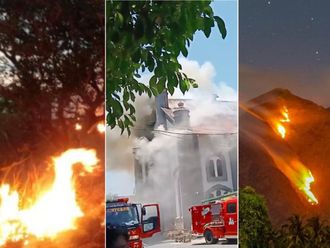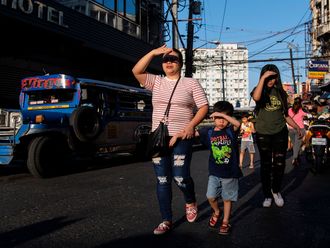Manila: The incoming administration of President Rodrigo Duterte is looking at the possibility of using cable cars as a temporary remedy to Metro Manila’s chronic road traffic conditions.
“We are looking at several solutions to traffic in Metro Manila and one option is using cable cars,” Arthur Tugade, incoming Department of Transporation secretary said on Tuesday during an interview aired via cable news network, ANC.
Despite the existence of an elevated rail system, the LRT, road traffic in Metro Manila had often been described as “monumental,” especially along the main artery, the Epifanio delos Santos Avenue (EDSA).
EDSA connects the cities of Kalookan, Quezon, Mandaluyong, Makati and Pasay. During peak hours, commuters and office workers spend a large part of their time travelling instead of working.
While construction of more roads and higways appears to have little effect on easing road congestion, Tugade said the solution might be using cable cars. He said the idea of soaring above traffic using cable cars had been suggested by some transportation experts who took note of Bolivia’s experience.
“In Bolivia, they are using cable cars with gondolas that can seat as many as 35 people,” he said.
The official made no mention on whether studies exists to support such a project for the Philippines and how safe cable cars are given it would be employed as an alternative mass transport option in addition to the existing light rail transit (LRT) systems, buses and minibuses that are currently in use.
Compared to constructing more highways and railway lines, which will take years to construct, stringing a network of cables and other infrastructures for gondolas would be faster.
“Once construction starts, it could take only anywhere from one year to six months to finish,” he said.
He said while other options to solve the traffic situation were being considered, using cable cars appear to be a promising alternative.
Providing solutions to the traffic problem in Metro Manila had been one of the biggest concerns of the outgoing administration of President Benigno Aquino III.
Road traffic impacts on so many Filipinos’ lives that incoming President Duterte made it one of his campaign promises during the May presidential elections.
Duterte had recently said he may have to ask Congress to grant him special emergency powers to address Metro Manila’s traffic situation.
“There was a study conducted by the Japanese International Cooperation Agency (JICA) several years ago that said that every day, the country loses P2.4 billion (Dh190 million) from traffic and lost productivity,” he said during an earlier interview with reporters.
Under the country’s law, the President can ask Congress to provide him provide him with certain “emergency” powers under certain crisis conditions.
He said what the incoming president is looking at is declaring a state of emergency concerning traffic for a limited period.
“Maybe two years at the most, so that we can address the traffic situation,” he said.
Duterte is expected to be sworn into office as the Philippines’ 16th president on Thursday when Aquino’s six year term expires.











